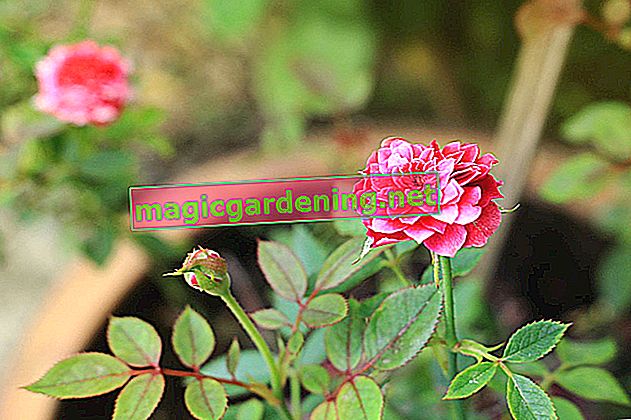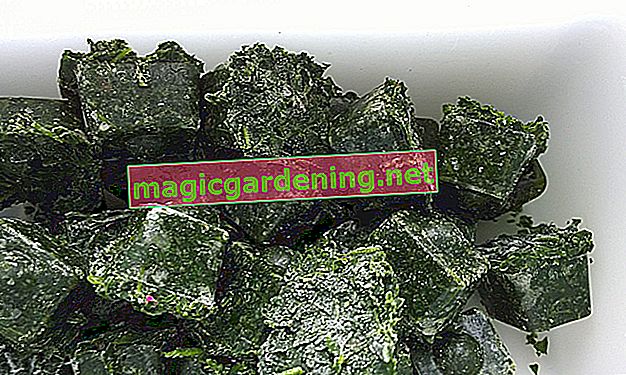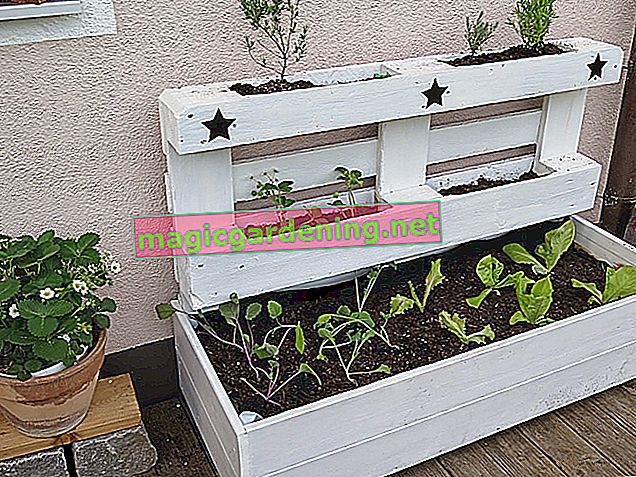
Which support for which roses?
Rose arches are ideal for climbing roses, but support grids in the form of obelisks, columns or pyramids or a simple grid structure are also ideal. Incidentally, the same supports can also be used for somewhat larger shrub roses, which - if they are grown correctly - bloom even more profusely than in their natural shrub form. Hybrid tea roses and standard roses, on the other hand, are usually satisfied with a simple stick made of either metal or wood, which, however, has to be firmly anchored in the ground.
also read
- Hibernate roses properly - even in the bucket
- Watering roses properly - how to proceed
- Cover roses properly for optimal winter protection
How should rose supports be made?
Rose supports made of wood look natural, but unfortunately the material has a serious disadvantage: it weathers after a few years and then has to be replaced - with large roses such as climbing roses or some shrub roses, this is not that easy. Metallic rose supports, on the other hand, are better; they are made of powder-coated and hot-dip galvanized steel and have tubes with a diameter of at least 15 millimeters. These are stable and do not rust as quickly, but should be attached to the ground with a special anchor. Support aids made of simple, non-galvanized iron, on the other hand, are usually not very stable and also rust quickly.
Correctly attach roses to a support
In addition to the actual support, the fastening material is also important: If possible, do not tie roses with metal wires, as these can damage the shoots. It is better to use natural materials such as bast or the like, which, however, deteriorate after a while and have to be replaced. But plastic straps or sheathed wires are also very suitable, they are also more stable. In addition, never thread the rose shoots through the support, as this can also lead to injuries, rose shoots should always be tied.
Tips
Instead of buying expensive rose supports, you can make them yourself from wood or metal. For self-built wooden supports, simply screw a few square strips together in the desired shape, reinforcement bars can be used wonderfully for metal supports - in a straight or curved state. The latter also have the advantage. that later they are almost invisible in larger bushes.








